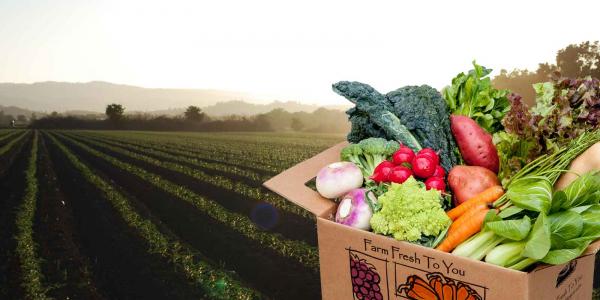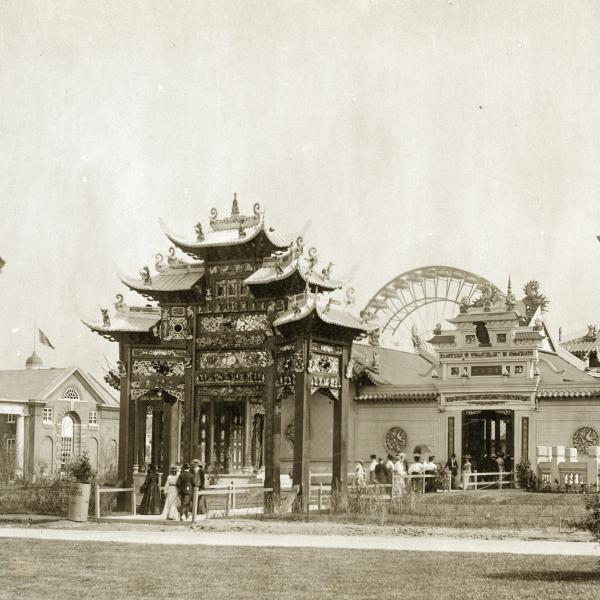Historian Corinna Treitel, a Faculty Fellow in the Center for the Humanities, traces the trajectory of the practice of “natural eating” from its origins as a 19th-century German countercultural movement to a $72 billion global industry — including its elevation as the Third Reich’s preferred diet.
The conversational melee over natural foods today — about chemical “poisons,” GMOs and organic farming — obscures another interesting story: How eating “naturally” became compelling in the first place. Awash in a wholesome glow and $72 billion in global sales, this practice became popular in part thanks to a cast of German actors who were both eccentric and opportunistic, drawing liberals and Nazis alike.
In her current work-in-progress, “Eating Nature: Food, Agriculture, and Environment in Modern Germany,” Corinna Treitel, associate professor of history and a Mid-Career Faculty Fellow in the Center for the Humanities, takes on the story of how 19th- and 20th-century Germans spawned a worldwide movement.
Treitel’s interest was piqued by the movement’s humble beginnings with a countercultural group in fertile central Germany. “This project speaks to my interest in how knowledge gets made,” Treitel says. “It doesn’t just get made by scientists and elites. It often gets made in exchange with other players from odd subcultures.”
 What is your book about?
What is your book about?
The book is an investigation of the many food and farming practices that have grown under the umbrella of “natural eating.” Germans invested in eating a natural diet, for example, they pioneered early organic agriculture. Something similar happened in Britain. Many German practices associated with eating naturally have now gone global. The book goes back to the early 19th century and tracks the development of these ideas and practices.
This natural-food movement has previously been considered as marginal to German history. What has been written (or not written) about this topic?
One of the agendas of this book is to track how things that were invented by a very small subculture of odd Germans became mainstream. The people who created these practices were part of the Life Reform Movement — naturopaths, nature healers, nudists, back-to-the-landers. This is the subculture that popularized vegetarianism as the most natural diet. Historians have written about Life Reform, but only as a self-contained movement. They’ve never tried to track how the movement’s “practices of nature” traveled to other parts of German culture.
How did their ideas spread?
There are many answers to that question. One is that Germany had two terrible experiences in the 20th century with hunger, one in the First World War and one in the Second World War. In both of those wars, the German state co-opted natural eating practices and used them to try to get Germans to eat more efficiently.
Another answer has to do with the epidemiological transition from infectious to chronic diseases, from diseases like cholera and smallpox to ones like diabetes, cancers and heart disorders. As Germans developed these “diseases of modernity” in increasing numbers from 1900 or so onward, state and nonstate actors began to think that eating more naturally might make sense as a national strategy of public health.
 One of the things that seems odd about German organic farming is its appeal to top Nazi leaders. We associate organics with promoting social justice, ending world hunger and so on. But it was the Nazis who first elevated organics to the level of state action. Several top Nazi leaders, in addition, ate almost exclusively organic food and several, like Hitler, were mostly vegetarian. These eating practices have been very politically promiscuous. They have belonged to the left and the right, and Germany, by the way, is quite typical in this regard. I always remind people that there are a lot of right-wing organic farmers in the United States today. The Oklahoma City bombing, for instance, was planned on an organic farm in Michigan.
One of the things that seems odd about German organic farming is its appeal to top Nazi leaders. We associate organics with promoting social justice, ending world hunger and so on. But it was the Nazis who first elevated organics to the level of state action. Several top Nazi leaders, in addition, ate almost exclusively organic food and several, like Hitler, were mostly vegetarian. These eating practices have been very politically promiscuous. They have belonged to the left and the right, and Germany, by the way, is quite typical in this regard. I always remind people that there are a lot of right-wing organic farmers in the United States today. The Oklahoma City bombing, for instance, was planned on an organic farm in Michigan.
What are some of the rules for “natural eating”? Why would meat, sugar and alcohol be considered “unnatural”?
“Natural” and “unnatural” are culturally constructed categories and their meanings change over time. In the 1860s, Eduard Baltzer, a radical Protestant minister and German liberal, invented this idea of natural eating. He lived in Nordhausen, a little town at the epicenter of Germany’s agricultural modernization. As a minister, he worked with the city’s poor and saw the effect this kind of food production was having on them: They were drinking too much schnapps, eating too much meat, eating a lot of sugar. It was causing all kinds of social distress. People were spending over half of their income on food; they didn’t have money for adequate housing or medicine. Baltzer saw this kind of consumption as unnatural. He advocated for people to eat more naturally, by which he meant more frugally, mainly fruits and vegetables. At this point, “natural” didn't have anything to do with “organic.” Artificial fertilizers were also invented in Germany in the 19th century, and Baltzer was enthusiastic about using them. By the early 20th century, the meaning of “natural” had become more familiar to us: unprocessed, healthy, grown without synthetic pesticides.
What happens with this movement after World War II?
After 1945, there are two Germanys, and the movement plays out differently in each one. In communist East Germany, the Life Reform Movement more or less disappeared because independent movements weren’t allowed. But the Life Reformers were still there. Some of them were incorporated into the state medical bureaucracy and managed to make the natural diet the “health diet” of East Germany. The organics piece disappeared but the practice of eating a lot of fresh fruits and vegetables and low consumption of sugar, meat and alcohol became part of state nutritional prescription.
In West Germany, old Nazis who had co-opted Life Reform regrouped in the 1950s and ’60s, incubating and developing ideas about eating and farming naturally until the environmental movement emerged in the ’70s and changed the political orientation of eating naturally once again. Old nature practices were vacuumed up by the environmental movement, and now they’ve become mainstream. Germany has the second largest market in the world (after the United States) for organics. There are only 80 million Germans, while there are 300 million Americans.
Let’s talk about the people who were subscribing to this way of eating. Both elite and populist?
From the late 19th to mid 20th century, they tended to be laypeople, people who didn’t have MDs or academic degrees. They tended to be bourgeois and all over the map politically. During the 1920s and afterward, people with medical degrees and PhDs began to co-opt these ideas, especially in the Third Reich. But Life Reform had many other trajectories, too. Today, for instance, there are organic farms in Israel that descend from some of these German groups. The movement drew people from all walks of life.
 In what other ways do we see the impact of this movement today?
In what other ways do we see the impact of this movement today?
One of the subgroups in this movement was the anthroposophists. They created biodynamic agriculture, which is one of the premier organic farming systems in the world today. It was pioneered in the 1920s in the same part of Germany where Baltzer had, 80 years earlier, confronted the effects of modernization with his ideas of natural eating.
The area had fallen into another agricultural crisis, and biodynamics was theorized as the solution. Anthroposophists had the idea that the farm is a living organism with its own internal cycles. The original biodynamic farmers had an astrological understanding of soil fertility. They would do things like bury cow manure in the ground when the moon was full, let it sit for six months, then dig it back up and use it in homeopathic doses on compost to “enliven” it. The idea was that the earth amplified the cosmic currents of the manure while it was in the ground, drawing energies. They would then inject it, almost like a vaccine, into compost heaps. They would bury their seeds in the ground and meditate over them. They had clairvoyant visions about which seeds had received the cosmic energy and which had not. And it turned out that these practices produced incredibly tasty fruits and vegetables and animals.
Biodynamics has been exported all over — Switzerland, Austria, Britain, the United States. I’ve spoken with a lot of chefs who will cook only with meat, vegetables and fruit that have been produced on biodynamic farms.
How does your book expand the understanding of biopolitics in Germany?
Biopolitics has emerged as a big concept in the humanities and social sciences over the last 30 years. It’s a term to talk about the effort to manage living populations, especially human ones, as a natural resource. Good examples include public-health interventions, nutritional prescriptions and racial hygiene, though the last one is typically the only one that gets written about in the German context. One of the agendas of the book is to point out that there have always been other kinds of biopolitics in German history, produced by the kinds of people we wouldn’t expect.





